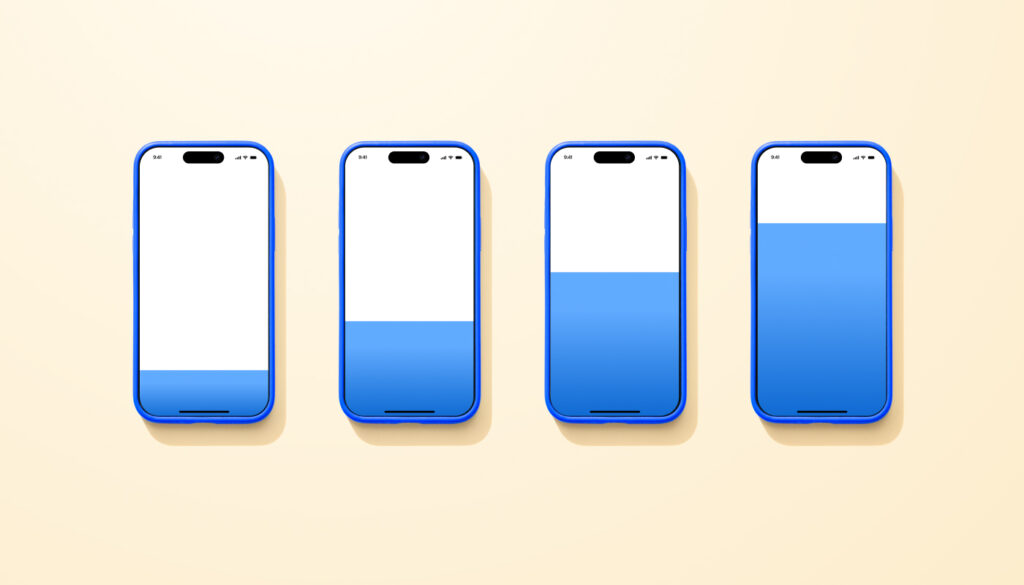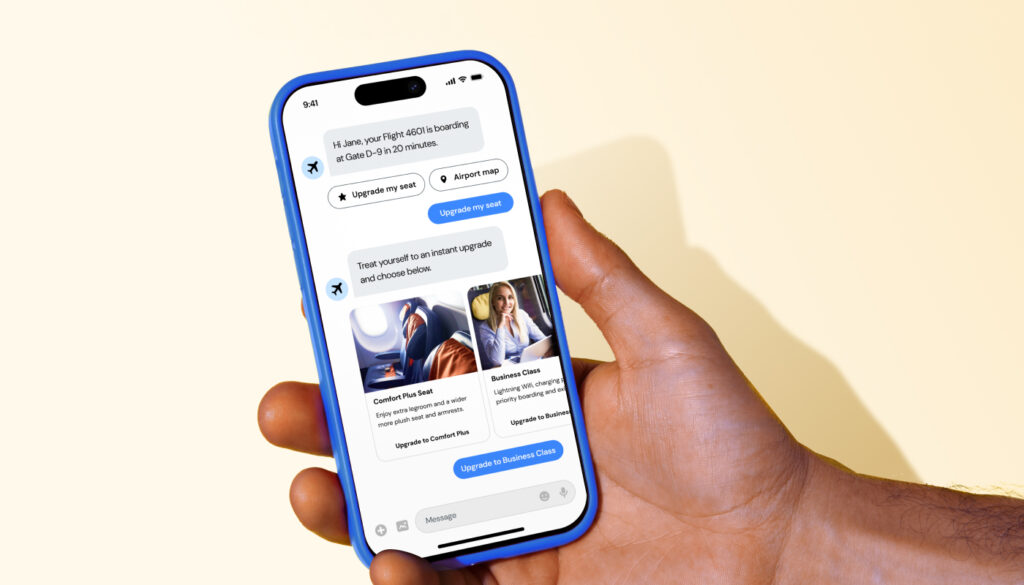Insights
7 trends that will transform digital customer communication in 2025

Insights

Sinch powers over 800 billion customer interactions annually for more than 150,000 businesses worldwide. This gives us a unique vantage point on the future of digital customer communications. Our scale and reach across messaging, email, and voice channels give us unprecedented insight into how businesses and customers are connecting—and how these interactions are rapidly changing.
Drawing from our extensive data, in-house experts, and industry analysis, we’ve identified seven trends that will shape customer communications in 2025.
Whether you’re a marketer crafting an engagement strategy, a product owner planning your roadmap, or a CTO evaluating technology investments, these insights will help you prepare for the significant shifts ahead.
Businesses that can’t provide immediate answers will struggle to retain customers in 2025. Customers increasingly expect real-time responses across every channel.
Our recent Customer Connections Report, which surveyed hundreds of U.S. consumers and businesses, revealed that 20% of consumers would be happy to avoid talking to an agent if AI can answer their question, primarily due to faster response times.
Organizations that implement AI to provide immediate responses are projected to reduce contact center costs substantially. Gartner Research supports our prediction, estimating that 80% of enterprises using digital customer communications will use generative AI-based conversational AI capabilities, up from 20% today.
Here’s an example from Bizbike. They are Belgium’s largest eBike provider and a Sinch customer. Bizbike implemented an AI chatbot to handle customer inquiries and saw their Net Promoter Score increase by 4 points. The chatbot now handles 30% of all customer FAQs while saving over 40 hours of agent time per month, demonstrating how immediate AI responses can both improve customer satisfaction and reduce operational costs.

How to prepare:
Through our work with global enterprises, we’re seeing a clear pattern: leading companies are moving away from “channel-first” thinking to “context-first” orchestration.
They’re building sophisticated decision engines that consider factors like message urgency, channel cost, customer preference, time of day, and previous interactions to choose the optimal channel for each communication.
Industry context is also crucial—each sector faces unique regulatory requirements that directly impact channel selection. Financial services need iron-clad security for sensitive communications, healthcare providers must ensure HIPAA compliance across all channels, and retail needs to balance personalization with privacy requirements.
A message that performs brilliantly on one channel might fail on another, not because of the channel itself, but because of how customers use that channel at different points in their journey.
A channel that works in one country might not work in another, not because of preference but because of geographic differences in cost.
“Sophisticated enterprises don’t just blindly use SMS and email. They might send SMS to specific customers because they know they’re profitable users. They send email to others based on geography or where they are in the customer journey because they know that’s what’s most effective,” explains Jonathan Bean, Sinch’s CMO.

How to prepare:
In 2025, businesses will need to work harder to help customers distinguish legitimate communications from fraud. According to a report from the FTC, losses from digital impersonation scams topped $1.1 billion just two years ago.
The increasing adoption of RCS (Rich Communication Services) is a testament to the desire for more trustworthy communication. RCS is the next generation of text messaging where every business must be verified before sending messages. With RCS, the sender’s logo appears at the top of the message thread along with a verified checkmark.
In September of 2024, Apple adopted RCS. Soon, customers will come to expect that messages from brands be verified. And this expectation will go beyond messaging.
“The richer the channel, the more important trust becomes,” explains Virginie Debris, SVP of Product – Messaging & Operator at Sinch. “When you’re sharing sensitive information or conducting transactions, customers need to know they’re in a secure environment.”
The same month Apple adopted RCS, Gmail expanded adoption of BIMI to reduce brand spoofing in email. Similar to RCS, with BIMI (Brand Indicators for Message Identification), emails from registered brands appear with a logo in most mailbox providers along with a verified checkmark.
To get a BIMI logo, brands must enforce DMARC, an email authentication protocol. According to our latest report, DMARC adoption increased by 11% this year.
AI will also raise the stakes for customer trust. Customers will expect businesses to clearly communicate when and how they’re using AI. “The advent of generative AI has elevated the importance of trust,” notes Bean, Sinch’s CMO. “It’s become the defining factor in how enterprises approach customer communications.”
The winners in 2025 will maintain security and showcase it as proof of their commitment to customer trust.

How to prepare:
Businesses that send basic “Your order has shipped” texts in 2025 will be missing a massive opportunity. As RCS adoption accelerates and rich messaging becomes standard, every notification should open the door to meaningful customer interactions.
“Traditional channels like SMS have typically been one-way streets. Brands send messages but don’t expect replies,” explains Robert Gerstmann, Co-founder and Chief Evangelist at Sinch. “But RCS is changing this dynamic. When customers receive rich messages with interactive elements, they respond and engage in real conversations with brands.”
This isn’t just about adding buttons to messages—it’s about turning everyday touchpoints into revenue opportunities. “You might initiate the conversation for a parcel delivery and then take this opportunity to start a conversation,” notes Debris, Sinch’s SVP of Product.
Every ping should solve a problem or create an opportunity. Here are examples of what that may look like:

How to prepare:
As notifications evolve into meaningful conversations, the next step is personalized shopping experiences right in your messaging app. Conversational commerce will move from a novelty to a primary sales channel. This represents a fundamental change in how customers discover, evaluate, and purchase products.
What exactly is conversational commerce? It’s the ability to browse products, ask questions, and complete purchases without leaving your messaging app.
While Instagram pioneered in-app shopping in 2020, 2025 will bring sophisticated AI shopping assistants to your text messages, powered by RCS. RCS offers brands the ability to enhance their messages with carousels of products and buttons.
Through our platform, we’re seeing early adopters achieve remarkable results. Courir, a leading footwear retailer in Europe (where RCS adoption is further along), saw a 137% return after experimenting with RCS.
AI is accelerating adoption by solving key challenges:
The opportunity is massive but largely untapped. According to Forrester Research, while over one-third of online adults in the US, France, Germany, and UK already use instant messaging or chat to research products, only about 20% of brands are expected to implement conversational commerce in 2025. This gap represents a significant opportunity for businesses ready to move early.
By 2029, Juniper Research predicts RCS business messaging will reach 200 billion messages globally.

How to prepare:
If your customer service team can’t see what your sales team promised, or your marketing team sends messages that ignore recent support interactions, that’s not just inefficient – it’s damaging your customer experience. In 2025, fragmented communication data won’t just frustrate customers, it will block your ability to deliver the intelligent, contextual experiences they expect.
Expert interviews conducted by Sinch for a recent analysis with a premier global consulting firm surfaced a critical insight: “AI and machine learning require consolidated, clean data. That’s why integration is becoming a make-or-break factor.”
Without connected conversation history, your AI is just making educated guesses.
“You need to understand your customer’s complete conversation history. Knowing that a customer faced a specific issue two weeks ago provides crucial context for today’s interaction,” explains Gerstmann, Sinch’s Co-founder.
Without this context, every customer interaction starts from scratch.
“Instead of moving the data constantly, how about we find it and pull it together on demand or when we need to?” suggests Sibito Morley, Chief Data & Transformation Officer at Sinch.
While 70% of Fortune 500 companies are investing in customer data platforms (CDP), the key is connecting these systems with your communication channels. Integration between your CDP and communication providers, such as Sinch, ensures every customer conversation builds on previous interactions.

How to prepare:
The winners in 2025 won’t necessarily have the most data. They’ll just know how to use what they have. Every customer interaction should build on the last one, not start over from zero, and AI should make each interaction smarter than the last.
The most expensive message could be your cheapest if it gets the job done right. In 2025, successful businesses won’t just look at cost-per-message—they’ll focus on which channels deliver the best outcomes for specific customer interactions.
“Email remains the backbone of customer communications not just because of its reach, but because it continues to deliver strong ROI,” notes research Sinch conducted with a premier global consulting firm. “The key is knowing when to invest in premium channels for higher-value interactions.”
Here’s what smart channel selection looks like in practice:
“In today’s economic climate, enterprises face increasing pressure to deliver cost-effective customer communications,” notes Debris, Sinch’s SVP of Product. “This is driving them to explore smarter, more efficient ways to reach their customers.”

How to prepare:
The winners in 2025 won’t be the ones spending the least. They’ll be the ones spending smartest. Every message should deliver value that justifies its channel choice. Working with experienced communication partners helps ensure you’re using the right channel for the right moment.
As we approach 2025, these trends point to a clear future: one where customer communications are more immediate, more intelligent, and more integrated than ever before. Success will come to organizations that can balance innovation with practicality, security with convenience, and automation with human touch.
For businesses preparing for this future, the time to act is now. Whether you’re just starting your digital transformation journey or looking to optimize your existing communication infrastructure, these trends provide a roadmap for the years ahead.
Ready to prepare your business for 2025? Contact Sinch to learn how our global expertise and comprehensive communication solutions can help you stay ahead of these trends and build stronger customer connections.